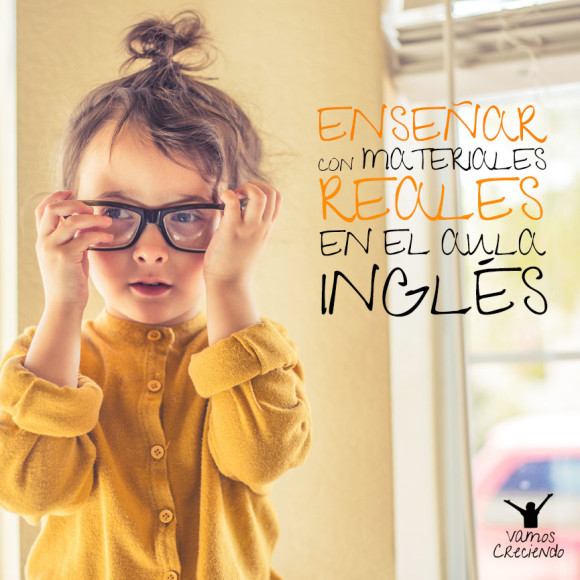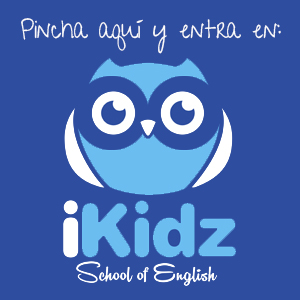When we speak of teaching languages to adults, using real materials is commonplace and common classes. But when it comes to children, It is somewhat less common and widespread. It seems that we should teach children to adapt texts and materials, and we are not very used to teach with real materials. Sincerely, I think this is a mistake for several reasons.
First, the real materials are much easier to prepare, it's more, often we not even have to prepare anything. But this is not the only advantage, these materials also:
- They contain a real language.
- They are easily accessible.
- Motivate students.
- Prepare students for real situations.
- Students build confidence.
- Provide a real context to present a specific vocabulary.
- Pose a challenge or challenging for students.
Yesterday I was at the annual conference of the British Council for teachers, and this was one of the topics discussed.
I would like to share with you some of the resources listed in one of the classes and presentations, because I think many teachers can give you ideas to implement in the classroom and, many parents will come to go over great with the kids at home.
1. Short films.
The use of short or mini movies is great because it gives us a "context" on which work quickly.
Simply putting on Youtube Pixar short films You will have many short films drawings, less than 5 minutes, with which you can work with the kids, how?
- Pre-viewing activities.
If you decide to use one of these short films in class, you can perform many activities around them. Before seeing the short, You can ask children to provide for what will happen. To guide, You can show a number of screeshots or images from the movie, with these images you can ask them:
– Ordered the images as they believe that will happen in the short.
– Try to guess what will happen in each of these scenes.
– Try to guess or remember the names of the characters.
Pixar shorts are generally based on movies we've all seen. Therefore, for kids it is easier to get an idea of what might happen, how to call characters, What roles will in history, etc.
- After viewing activities.
Before seeing the short, díctales some questions, place them together and make sure everyone has understood the information that you need to remove the display.
I will use the example of this short movie based on the Monster, one of my favorite 😉
https://www.youtube.com/watch?v=2mOqWxM5PyY
Some questions you could make, English course, when viewing this short:
- Who has bought the car?
- Why you have bought this car?
- What happens to new car?
- Do you think the monster has bought the car repents?
You can go stopping the video and who will answer the questions. With younger children or kids in lower level you can give several answers and alternatives that just have to choose them. This, actually, It is something you can be adapted depending on how are your children and you think needs to have.
You can also think of simple questions like what color is the car?, etc.
After answering these questions you can ask them to describe and draw their dream car and later put in common with the rest of the companions.
Other ideas of activities that can make after seeing the short are:
- True or false. Give them some related to history and they have to decide whether sentences are true or false.
- Movies voiceless. You can bring them the movie without sound, and try to figure out what the characters say and what is happening. Later, the sound you put them together and see who was right.
- Whose is this voice? A similar but reversed activity is to put the screen in black and children only listen. Ask them to try to guess who is the voice already listening to what time of corresponds history.
- “Act it out”. After seeing the movie can be you who actuéis. Divide the children into groups based on the number of characters in the story and act mimicking the story you just saw.
- What comes next? When you are watching the movie, Paral. Ask them to describe and try to guess what comes next. Then put back the movie. Who got guess?
2. Books.
Books can also be a very good source of activities.
Grab a book suitable to the level and characteristics of your students. For books, You can also perform pre- and post-reading activities.
- Pre-reading activities.
Ask them try to imagine what will happen in history. You can give them some images of the jumbled book and ask them to order.
If they are small or level it is not very high, You can make a card describing what will happen in each image and just have to attach the image with description.
Further, can you give an image of each character and ask them to think what character is and what role will in history.
Another activity you can do with them is anticipate history through the story or book holders.
Word Splash It is an activity that can be fun and can also be a good previous activity. It is to prepare students with a sheet full of misplaced words. Basically, what they have to do is bring these words to make sentences that have to do with history, or what they think will happen in history.
After reading the book, together you can see whether they have met the ideas that students had generated uniting the words.
- After reading activities.
After reading the book, You can see if your predictions were fulfilled, ask them to prepare a short summary of the story, etc.
And The, further, you decide to do in the book-based activities, They need not revolve around him. You can also place Related activities.
For instance, if you are reading a book in which the protagonist goes grocery shopping, You can perform an activity in which they have to join the store name with the name of the person selling these products: baker con bakery, butcher con butcher’s, etc.
Other ideas for further activities:
- What would ...? What other characters would have done if they had been in the place of the protagonist?
- Role play. Each child takes the role of a character and can actually lead to one of the scenes from the book.
- Story board. A storyboard is nothing but a set of illustrations in order to serve as a guide to understanding a story. Children can make their own story book you just read. This activity can also shape the prior reading.
If you decide to use your real materials in English class, it's a matter of taking a little imagination and a little creativity and, I assure, they are a great source of activities for our students.
As usual, thanks for being there. I hope these activities will be useful with your kids.
“Education is not making adults as a model but release on each man that keeps him from being himself, allow performed by 'genius’ singular.”
Olivier Reboul
Tags: teach, english, books, actual materials, Movies



 Español
Español English
English Français
Français Deutsch
Deutsch 中文(简体)
中文(简体) Português
Português
